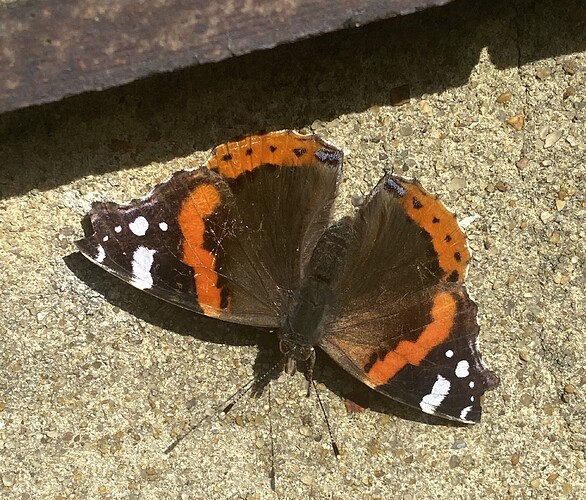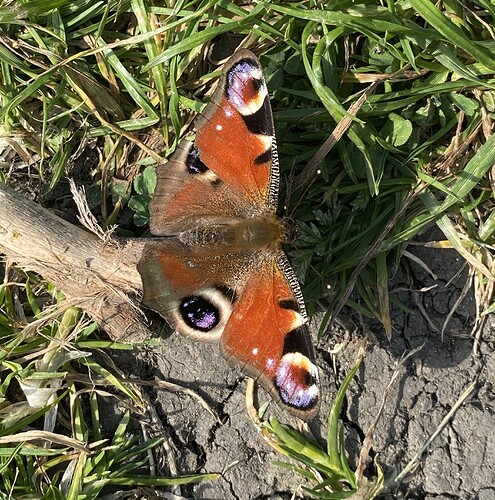Some interesting local mentions:
1. Peacock
Photograph: Gillian Day
An outlandish pattern of eye-spots frightens away potential predators, especially when combined with the peacock’s ability to hiss by rubbing its wings together. A regular visitor to gardens (leave a few nettles for its caterpillars to eat), it can be spotted at nature reserves like Gunnersbury Triangle in Chiswick.
2. Speckled wood
Photograph: Vaughn Matthews
Once known as the Enfield eye, this butterfly is increasing its range, enjoying woodlands, parks and gardens. Often encountered resting on paths or spiralling up and down with a rival, it can be spotted in woodlands such as Oak Hill Wood in Barnet .
3. Small blue
Photograph: Chris Lawrence
Britain’s smallest butterfly is found on warm, unshaded chalk downlands such as those skirting the capital’s southern edges between Biggin Hill, Coulsdon and Banstead. It can be found in abundance at Hutchinson’s Bank nature reserve in New Addington , one of the top sites for them in the country.
4. Red admiral
Photograph: Guy Edwardes
A remarkably resilient butterfly that can migrate to Britain from Europe and also survive our winter as an adult. Sometimes spotted gorging on rotting fruit, it’s a distinctive sight sunning itself on scrub at Braeburn Park nature reserve in Crayford as well as Horsenden Hill , Wanstead Park , Hampstead Heath and back gardens.
5. Marbled white
Photograph: Guy Edwardes
Its caterpillars spend the winter tucked away in a grassy tussock (a type of grass), awaiting the summer when its mottled black-and-white adults dance in the meadows. Recently expanding its range from suburban strongholds to inner London boroughs, it can be seen at Brockley and Ladywell Cemetery .
6. Comma
Photograph: Richard Burkmarr
Its ragged shape makes the comma unique among British butterflies, although it is named for the obscure, white comma mark on its underwing. It’s regularly seen in London’s parks and nature reserves, where its caterpillars (camouflaged as bird droppings) feed on stinging nettles and hops.
7. White-letter hairstreak
Photograph: John Bridges
With its caterpillars feeding on elm tree leaves, this butterfly suffered in the wake of Dutch elm disease in the 1970s. Now making a comeback thanks to disease-resistant cultivated elms, it can be seen flitting in and out of the canopy of elms at Vauxhall Pleasure Gardens and at Nunhead Cemetery .
8. Holly blue
Photograph: Philip Precey
The most commonly seen blue butterfly in the capital, the holly blue can be found fluttering around parks, gardens, cemeteries and urban woodlands, between April and September. Its success in London is largely due to the abundance of its two favourite foods: holly and ivy.
9. Purple hairstreak
Photograph: Philip Precey
First recorded at One Tree Hill in Honor Oak in the 1760s, this striking butterfly is now widespread across London throughout July and August. Unusually it is most active in the early evening and can be seen flitting around at the top of mature oak trees, such as those on Streatham Common or in Gutteridge Wood .
10. Silver-washed fritillary
Photograph: Margaret Holland
A large yet graceful resident of woodland glades such as at Sydenham Hill Wood and Epping Forest . Males patrol their territory while females search for violets on which to lay their eggs















